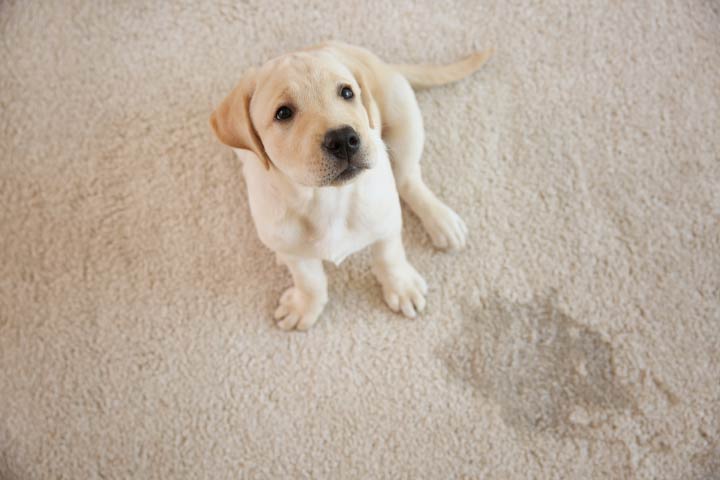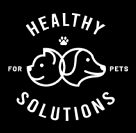
Having a new puppy takes patience, time, and dedication. And a lot of this time and patience is dedicated to training.
So, it can be super disheartening to spend so much time teaching your new ball of fur to do his business outside, only to step in a puddle in the middle of the kitchen–which is way too far from the sink to just be spilled water!
In this article, we’re going to discuss 5 tips to help increase your success potty-training your little pooch. And at the end, we’ll discuss some guidelines to follow to help you decide when to get your veterinarian or a trainer involved.
Tip #1: Positivity, Positivity, Positivity
In general, when training a puppy to do anything, keeping a positive approach is the most productive way to see results. Evidence dating back to World War II when dogs were being trained extensively over really short periods to be deployed for military work showed that negative reinforcement did not produce the type of results the Army hoped for.
Since then, while negative reinforcement like shock collars, physical reprimands, and punishment may still be used by very few, there has been a gradual shift over the decades to focusing on positive reinforcement with only brief corrections when needed. Why? It’s more effective.
The whole idea of being the alpha by exerting physical and verbal dominance over a young puppy has proven time and again by behaviorists to be ineffective. There is no evidence that negative reinforcement is superior for helping you get your dog to do anything you want. Most of the time you just end up with a scared dog that has been conditioned to be afraid of everything, especially people.
Now, that doesn’t mean that verbal reprimands and conditioning aren’t a part of training, but they are only a small percentage of a training regimen. Positive reinforcement makes your pup happier and helps her learn faster. Focus on what you want your dog to do for you, not what you don’t want her to do.
Here’s an example. Let’s say your pup has a pee accident that you come across. Bringing him over, shoving his face in it, and yelling “bad dog” accomplishes nothing. This is especially true if it’s not a fresh accident but one that occurred much earlier, while you were in another room.
What’s best to do instead is to catch these accidents immediately (you’ll learn more about how to do that with Tip #3!), and if so, you can bark a loud “No!” but make sure to take your pup outside immediately. If she does further business outside, provide a small treat reward and lots of verbal praise.
And to that end, provide a treat reward and lots of verbal praise every time your pup uses the potty outdoors appropriately, at least initially. Over time, you’ll be able to reduce the need for food rewards and rely solely on verbal praise, which you can use life-long and calorie-free.
In this way, your pup will respond much better to you being happy, than being mad. And yes, these accidents can be really frustrating when they happen, especially if you’ve had a long day at work or at home with the kids. But your young puppy doesn’t understand that and looks to you for guidance. So make sure to hide that frustration and focus on the positive with your pup.
Tip #2: Provide a Safe Space with a Crate or Playpen
The first and most important step to successful potty training is to create or provide a space where your puppy will not have accidents. This is usually in the form of a crate or a small playpen. This area should not be considered some kind of prison, but a safe space.
Include food and water in your puppy’s crate or pen. Dogs rarely urinate or defecate in the same area they eat and drink from, so in addition to providing some of life’s important comforts, keeping the food and water bowls in that space also discourages accidents. Feel free to include toys and bedding too, as long as your pup doesn’t destroy them when left alone.
So that your puppy doesn’t associate the crate or pen with punishment (or with you being absent from the home, fomenting separation anxiety) keep these areas open while you’re home to allow your pooch to enter and exit them as she pleases.
But the most important role the crate or pen fills is to be where you put your pup when you can’t supervise him. If you’re leaving the home, or even if you have to go to another part of the house where you can’t keep your dog under direction supervision, he needs to be in his crate or pen. Even if it’s just for a minute for something quick.
.jpg)
Tip #3: Constant Supervision and Leash Training
A big part of being successful in potty training is to make sure your puppy is constantly supervised. This makes sure that if an accident occurs, you can immediately provide the appropriate correction, redirection, and positive reinforcement if he does further business outside.
This may seem daunting at first, but there’s two ways you can keep your young pup within sight at all times. One is with crate training which we just reviewed, and the other is with in-home leash training. That’s right. You need to keep your pup on a leash with you inside your home.
It’s important to note that this is not the same thing as tying a dog to something with a leash. What we’re talking about here is using an extra long leash tied or attached to you–one that’s long enough to allow your pup to roam freely but short enough that she can’t go into the next room and out of your line of sight. You can hold the leash, wrap it around your wrist, or tie it around your waist, but it has to be on you at all times.
What in-home leash training allows you to do is to make sure your puppy can’t have an accident out of your sight, as this allows for immediate correction. With consistency, and following the rest of the plan over a few weeks, you should find that the leash is no longer necessary.
Tip #4: Say No to Pee Pads
Some pup parents out there with large breed dogs may be wondering why discussing pee pads are so important, but for you small breed parents out there, you probably get it.
Pee pads (also sometimes called chuck pads) are often used by puppy parents, especially with small and toy breed dogs, either as a segway into actual housebreaking or as a single method of elimination, kind of like a cat using a litterbox. Pads are placed in one or more “approved” and “strategic” locations in the home, a pup goes there to do her business, and the pad is thrown away and replaced after a single use.
The main hope with their use as a temporary tool, is that by training a pup to do her business on a pad, this might dissuade her from doing it anywhere else in the house. The idea of training a tiny pup to go outside can also be daunting and in an effort to protect a small puppy from the big outside world, it seems safer to some to keep their pet indoors.
Unfortunately, we can still see potty training accidents with pee pads in the home and in fact the pads may perpetuate the problem. When little pups start using them reliably, supervision often grows lax and lines get blurred. Dogs that use pee pads, especially with poor supervision, almost inevitably start urinating on similar surfaces, like a throw rug. With no supervision at all, we may graduate from a throw rug to the carpet.
So what almost always happens is that instead of having a puppy that mostly does his business outside and only sometimes has accidents indoors, you now have a puppy who always does his business indoors and inevitably gets confused about where to go. You now find yourself scrambling to get your pooch to go outside, when you’ve already spent weeks teaching him to do it indoors.
Trying to backtrack from pee pads is considerably harder than starting with outdoor training from day one. If you have strong opinions about using pee pads to start, make sure you’re weaning your pup off of them by 3-4 months of age. This way, if you find you have serious housebreaking issues at that age, you still have plenty of time to enact the strategies we’re discussing before these habits become permanent.
.jpg)
Tip #5: Keep a Log
For those of you with human children who have endured potty training (which I might add takes much longer than with pets) you learn quickly that you need to stick to a schedule and encourage your child to go potty regardless of whether or not they “have” to go.
Similarly, a mistake some new pup parents make is to wait for their pooch to “tell” them she needs to go by whining, scratching at the door, or giving a signal. As human parents all know, waiting until your child realizes he or she needs to go often ends up in a frantic rush to the bathroom and arriving just a little too late.
Knowing when your pup needs to go and figuring out what this schedule is, requires observation and documentation. Keep a log of all the major necessities your puppy engages in, like eating, drinking, playing, and using the bathroom. When you record when these items happen the most, you’ll be able to figure out a schedule for potty times. You thus will be able to anticipate your pup’s needs and avoid accidents that result from not taking her out often enough.
You may find that you need to adjust your own schedule to match your pup’s. For example, you might find that you need to let him out an extra time around your lunch break by zipping home for 10 minutes, because he has an accident as soon as you let him out of his crate when you get home.
Or, when you’re with your pup the whole day and she’s being really active, you might find that you need to let her out more often, even every 30 or 40 minutes, because she’ll have an accident if you stretch that time out to an hour.
Hiring a dog walker to come let your pup out at certain times can also be helpful if you’re stuck at work all day and can’t make it home.
Adolescence–Yes, Dogs Go Through It Too
There is a recognized phenomenon where dogs that appeared to be really well house-trained suddenly start having accidents, or engage in other inappropriate behaviors that they never did before. This can be even more frustrating for pup parents who thought the house-breaking days were far behind them.
During the age of 6-9 months, dogs can go through what some term an “adolescent” phase where they start to rebel a little against what they have been taught.
It’s really important to check with your vet if you suddenly start to see a kind of polar reversal in your pup’s good behaviors, to make sure a medical problem is not responsible. But as long as there isn’t, you can still re-housebreak your pup using the tips provided in this article, especially the constant supervision and leash training. With persistence and consistency, most dogs can be re-house-broken within 6 weeks.
When to Get Your Vet or a Trainer Involved
By the time a pup reaches the age of 6 months to a year, most behaviors are being set in stone. This is why it’s so important to have training, socialization, and conditioning started from the earliest days. And also why it’s important to jump on any “adolescent” behavior problems, like the ones we just discussed, immediately, before they become set.
My rule of thumb is that if your pup has reached the age of 6 months and you’re still having issues with potty training (or if you didn’t before and now your pup is “rebelling” against your training), you need to consult with your vet.
Because it can be hard to tell if continued potty accidents are a medical or behavioral problem, it’s best to start with a check-up with your vet to make sure a correctable behavior problem is the more likely and to rule out some medical causes.
If deemed behavioral, ask your vet about in-home trainer recommendations. I find that in-home trainers are the best for these types of situations, because they will see the home set-up and work with you to give you the tools to continue working with your pup successfully. More often than not, there is some issue with the way training is occurring in the home, and sometimes that is not apparent until someone experienced actually looks at the home set-up.
For example, I had a client I started to see with his 1 year-old dog who came to me a couple of times over housebreaking issues. He insisted the dog must have a medical incontinence issue, as accidents had been going on for months. I instead suspected some kind of behavioral or training issue and connected the client with my go-to in-home trainer with whom I often consult.
After the first consult, the trainer sent me a message indicating that he would no longer be able to work with the client and his dog. Upon entering the home, he found the dog tied to the oven handle in the kitchen, a small puddle of urine nearby. There was no crate or pen. He had quickly determined that through a lack of early training and good practices, the dog had become a “crate soiler”. And at a year of age, this was almost impossible to correct.
Remember when I indicated under Tip #2 that most dogs will not soil their crate or pen, especially where their food or water is? This is largely true, but if a dog is not worked with or let out often enough, he will eventually have to do his business. These dogs will learn to become tolerant of soiling where they sleep and eat and once this happens, the behavior is extremely difficult to change. So much so that my trainer will remove himself from those situations and advise getting a board-certified veterinary behaviorist involved.
I was somewhat shocked to hear this information, because none of these problems had become apparent in discussions with the client, who was a very friendly person and appeared to care for his dog. And he clearly had nothing to hide and had no ill intentions towards his dog, because he was eagerly amenable to having the trainer come to his home.
Naturally, this situation brings up some animal welfare concerns and those concerns were not disregarded. But in truth, the problem with this situation was a young client who had never had a dog before, didn’t understand what crate training was, and had no idea how often his dog needed to be let out.
Over time, his dog learned to adapt but unfortunately, this led to a practically irreversible behavioral problem. This pet parent was not intentionally mean, neglectful or abusive to his dog. But his ignorance on how to care properly for his young dog had serious ramifications for both of them.
This is an extreme example, but a true story of the consequences of poor training practices and highlights the need to start early and recognize when you need help. If you find your dog soiling in his crate or pen at all, seek help immediately.
A large majority of dogs who are surrendered to shelters are relinquished by their owners because of some behavioral problem. This also highlights how important good behaviors are for our bond with our pets and conversely, the strain that behavioral problems puts on these relationships.
So, if you’re having any issues with potty training or even other basic training issues, make sure to consult with your veterinarian. He or she can answer a majority of basic training questions. If a situation is particularly challenging or goes beyond the scope of a simple conversation at an appointment, most veterinarians will have a recommendation for a trainer or veterinary behaviorist to put you in touch with.
We’ve only really covered potty-training in this article, but there’s lots of other aspects to behavior and training. For some other general training tips for your new puppy, be sure to also check out our article, Tips for Training Puppies (https://healthysolutionsforpets.com/tips-for-training-puppies)
About Us
We've taken the guesswork out of caring for your pets. Our formulations are created by experienced veterinarians to address specific solutions for a variety of pet issues.
All of our products are:
As seen on:











